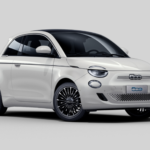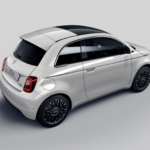The Fiat 500, once one of Europe’s best-selling small cars and a flagship model for Fiat, now faces a significant crisis. The new all-electric version, introduced in 2020, is struggling to attract buyers. Fiat now faces a tough question: can this iconic model be saved, or is its end near?

The electric Fiat 500, or e500, was designed as a compact city EV. It comes in two versions: a base model with 95 hp and a smaller 21.3 kWh battery offering up to 190 km (WLTP range), and a stronger 118 hp version with a 42 kWh battery and a real-world range of 317 km. Despite its compact size (3.63 m length) and quick acceleration from 0 to 50 km/h in just 3.1 seconds, the e500 faces a major obstacle: its high price. The base model starts at €27,500 , while the stronger version exceeds €31,999 . In the configurator, the price can surpass €40,000 —a staggering amount for such a small car with limited range.

This pricing strategy has its consequences.
In recent months, Fiat repeatedly paused production of the e500 at its Mirafiori plant, where electric vehicles make up 97% of output. The shutdowns, including for other electric models like the Maserati GranTurismo, stem from low customer interest in EVs, which has impacted the entire market.
Fiat attributes the issue to “uncertainty surrounding EV sales on European markets.” However, the e500 has faced criticism since launch for its steep price and limited range, relying heavily on subsidies to maintain any sales momentum.

When you can’t sell, slash prices.
Fiat has tried to rekindle interest by offering aggressive discounts in certain markets. The base e500 is now available with up to €4,500 (~CZK 110,000) off as part of a limited “electrobonus” campaign, running until the end of 2024.
A pivotal decision for Fiat
In response to the weak performance of the all-electric e500, Fiat has announced plans to pivot to a hybrid version. The new model, dubbed Fiat 500 Ibrida, will feature mild-hybrid technology, combining a 1.2L petrol engine with a starter-generator and a six-speed automatic gearbox.

Unlike full hybrids, this version will only enable minimal electric driving, such as in city traffic jams. Developing the new variant requires an investment of €100 million, with mass production expected to begin by late 2025 or early 2026.
Hopefully, this return to combustion engines isn’t coming too late to restore the Fiat 500’s former glory in the market.













Leave a Reply